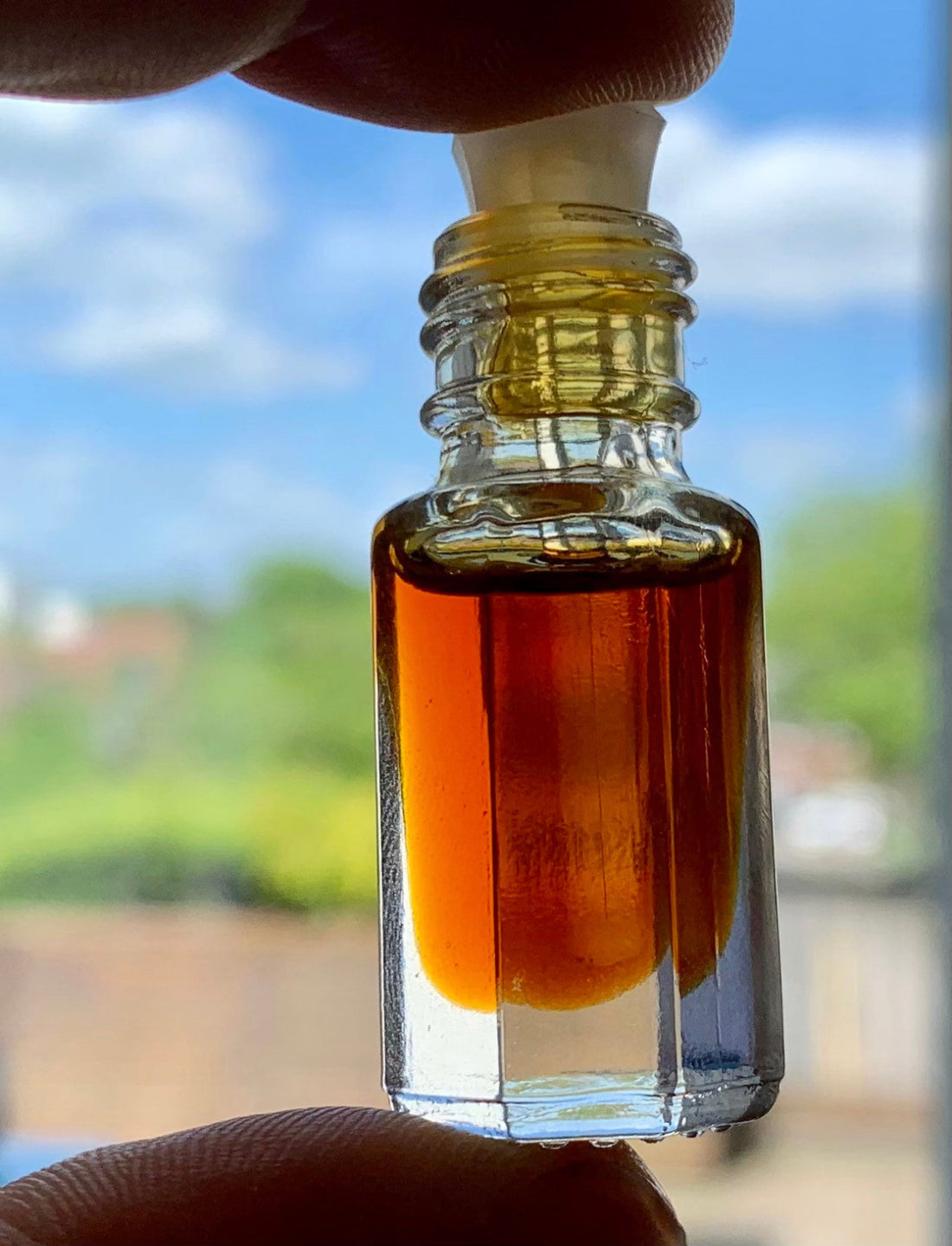Hello!
let's delve into the mystique of Oud oil. The intrigue surrounding its price and distinctive fragrance is about to unfold.
What is Oud?
Oud is a luxurious oil, sought after and often imitated in high-end perfumes. Beyond being blended into attars and perfumes, it stands as a captivating scent that can be appreciated in its pure form. The aroma of Oud undergoes variations influenced by the region, the specific tree species, and the methods employed in oil processing.

What does Oud smell like?
The olfactory journey begins with a mere swipe! The scent of Oud is a symphony of notes, influenced by the region, tree species, and oil processing. It can evoke sweetness, honey, nuttiness, ice cream, marzipan, barnyard, chocolate, minty freshness, fruity tones, and more. Oud's aroma is notably complex, transforming on the skin over hours.
Why is Oud so expensive?
Oud's price tag is rooted in its production process, involving a scarce resource that demands days or months for proper processing. While seemingly costly, only a tiny amount is needed for application. A single drop can translate to around 20 uses, making that 0.3g sample quite generous—providing around 180 swipes. Not a bad deal, considering!
Where does Oud come from?
Oud is derived from the distillation of agarwood, also known as Aloeswood, gaharu, or Oud Wood. This resinous wood is native to various Asian regions and is found in certain 'Aquilaria' tree species. The process involves parts of the tree being infected by a fungus through cuts or insects, prompting the tree to secrete a resin as a protective measure. This resinous wood, with its captivating aroma, has been admired for millennia and can be burned as incense or distilled to create Oud oil. We will be uploading a special blog post listing all the oud producing regions very soon!

Wild Vs Cultivated Oud:
The allure of wild oud's aroma is a transient delight. While agarwood can still be sourced or harvested in the wild across various regions, the practice is dwindling due to overexploitation. The rise of cultivation has become a significant trend, as wild stocks face depletion. In the current market, cultivated oud constitutes a substantial portion of agarwood sales annually. Forecasts suggest that in the coming decades, cultivated oud is poised to dominate the majority of consumption.
A Brief History of oud:
Aloeswood holds a significant presence in Biblical, Hebrew, and Islamic texts, having been utilized for incense, jewelry, and even coffins for the affluent and powerful for millennia. The cultivation of agarwood has deep roots, spanning hundreds of years, particularly in Bangladesh. Oud occupies a special place in Middle Eastern culture and has increasingly captivated the hearts of Western enthusiasts.

Oud Oil Processing:
Before distillation begins, the distiller faces the choice to soak and ferment the agarwood, a step that slightly boosts yield and dramatically alters the oud's aroma. Unsoaked oud tends to be light, honeyed, nutty, and pure. Soaking intensifies the aroma, adding distinct 'barn' or 'barnyard' notes—deep, leathery, with hints of cattle shed or even fecal notes, albeit in an appealing manner. The duration of soaking directly influences the level of these notes, allowing individuals to explore and find their preferred balance.
Traditional Indian processing involves using a large log fire with distillation equipment on top, employing a human finger to gauge temperature— a method still favored by some producers today. In contrast, modern facilities abound with hydro distillation and CO2 distillation methods.
Thanks for stopping by, feel free to check out our Oud selection in our shop 🥰.
